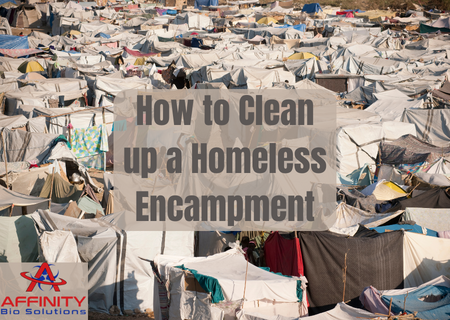 Homeless encampments, often referred to as ‘tent cities,’ have become a common sight in many urban areas worldwide. These encampments are usually a result of a lack of affordable housing, mental health issues, substance abuse, and other socio-economic factors. While it is crucial to address root causes, it is equally important to manage the hygiene and safety concerns that these encampments pose. This article provides a comprehensive guide on how to clean up a homeless encampment responsibly and humanely.
Homeless encampments, often referred to as ‘tent cities,’ have become a common sight in many urban areas worldwide. These encampments are usually a result of a lack of affordable housing, mental health issues, substance abuse, and other socio-economic factors. While it is crucial to address root causes, it is equally important to manage the hygiene and safety concerns that these encampments pose. This article provides a comprehensive guide on how to clean up a homeless encampment responsibly and humanely.
How to Clean up a Homeless Encampment
-
Collaborate with Local Authorities and Organizations
The first step in cleaning up a homeless encampment is to collaborate with local authorities and non-profit organizations. These entities often have the resources, experience, and knowledge to handle such situations effectively. They can provide essential services such as temporary housing, medical care, and counseling to the homeless individuals, ensuring their well-being during the cleanup process.
-
Communicate and Engage with the Homeless Community
Before initiating the cleanup, it is essential to communicate with the homeless individuals living in the encampment. This engagement should be respectful, empathetic, and aimed at understanding their needs and concerns. It is also an opportunity to inform them about the cleanup process, the reasons behind it, and the assistance they will receive during this period.
-
Provide Adequate Notice
It is crucial to provide the homeless individuals with adequate notice before the cleanup begins. This notice period allows them to gather their belongings for the transition. It also gives local authorities and organizations time to arrange for temporary housing and other necessary services.
-
Ensure Safe Storage of Personal Belongings
During the cleanup, the personal belongings of the homeless individuals should be handled with care. These items should be safely stored and returned to their owners after the cleanup. This process respects the dignity of the homeless individuals and reduces the trauma associated with the cleanup.
-
Conduct the Cleanup
The actual cleanup should be conducted by a professional cleaning crew equipped with the necessary protective gear. The cleanup process should include the removal of trash, debris, and hazardous materials. It should also involve sanitizing the area to eliminate any potential health risks.
-
Provide Post-Cleanup Support
After the cleanup, it is essential to provide ongoing support to the homeless individuals. This support could include temporary housing, job training, mental health services, and substance abuse treatment. The goal should be to help these individuals transition into stable housing and reintegrate into society.
-
Prevent Future Encampments
Finally, efforts should be made to prevent the formation of future homeless encampments. This prevention could involve increasing affordable housing options, providing mental health services, and addressing substance abuse issues in the community.
Conclusion
Cleaning up a homeless encampment is a complex task that requires a compassionate and comprehensive approach. It involves not only the physical cleanup of the area but also addressing the needs and concerns of the homeless individuals. By collaborating with local authorities and organizations, engaging with the homeless community, and providing ongoing support, we can ensure that the cleanup process is humane, respectful, and effective.
Contact Affinity Bio Solutions for All Your Professional Biohazard Cleanup Needs
- Biohazard Cleanup & Removal
- Crime Scene Cleanup | Trauma Scene Cleanup
- Unattended Deaths & Decomposition
- Suicide Cleanup
- Medical Waste Pick-Up, Transport and Disposal
- Water Damage | Flood Extraction
- Hoarded Environment & Hoarder Home Cleanup
- Vehicle Accidents | Vehicle Biohazard Cleanup
- Bodily Fluids | Blood Cleanup
- Odor Remediation | Odor Removal
- Homeless Encampment Cleanup & Biohazard Removal
- Abandoned Building and Foreclosure Cleanout
- Pest Removal in Arizona
